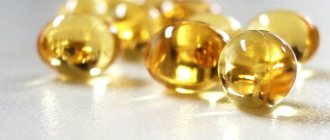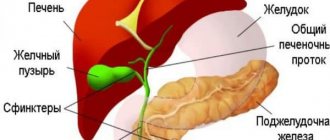Iron is one of the most important microelements in our body. It is part of hemoglobin and red blood cells, which are known to carry oxygen from the lungs to the tissues and carbon dioxide in the opposite direction. But the list of functions of iron in the blood is not limited to transport function. In addition, it takes part in enzyme reactions, creates normal conditions for the functioning of the brain and body, and helps strengthen the immune system. A lack of iron in the body can lead to deviations in any aspect of normal life, including anemia. Today we’ll talk about why this deviation can occur and how to determine the lack of iron in the body.
General information
Iron is not produced in our body, but comes only from the outside, but even the iron that is supplied with food is not 100% absorbed.
Iron, which carries two positive charges, is absorbed better than trivalent iron. Much also depends on the salt that contains this metal. For example, only 6-10% of iron carbonate is beneficial, but up to 25% of gluconate is absorbed in the intestines. Iron deficiency in the body is also affected by substances that are consumed simultaneously with foods containing iron.
So, ascorbic, citric acid, vitamin B, amino acids, proteins, manganese, zinc, etc. promote normal iron absorption. And calcium, oxalic acid, tannins and vitamin E should not be taken at the same time as iron, as they interfere with the digestion of iron and can become one of the causes of iron deficiency in the blood. At least a few hours should pass between meals rich in iron and those enriched with the listed substances and microelements.
Assimilated iron in the body is divided into different areas and tissues: most of it goes to hematopoiesis, a small amount goes to enzymes, and about a quarter of the total amount is deposited as a reserve in the liver.
Read in detail about the level of iron in the blood, as well as the causes of deviations, at the link
Lack of iron in the blood is partly due to the fact that we can only absorb about 1-1.5 mg of iron per day, provided we eat a normal, varied diet. And we lose 1-2 mg daily in the absence of injuries, illnesses and blood loss, during which these numbers increase significantly. It turns out that for the normal functioning of our body, we should pay special attention to iron consumption.
general information
The human body is unable to synthesize iron. Therefore, for normal functioning, it needs to constantly replenish its balance. Small amounts of iron are found in human bone marrow, liver and spleen.
The human body contains no more than four grams of this element. About 2.5 gr. makes up hemoglobin. In total, a person needs 10-30 mg of iron per day.
What is the role of iron
Each hemoglobin molecule contains 4 iron atoms. Thanks to them, oxygen is transported to tissues. Having picked up carbon dioxide, the atoms transport it to the lungs.
The role of this trace element in the human body is enormous. Many proteins and enzymes that control most vital processes need it.
- Cholesterol metabolism.
- Oxidation reaction.
- Recovery reaction.
- Hematopoiesis.
- A protective reaction of the immune system to the appearance of viruses in the body.
- DNA production.
- Elimination of toxic substances by the liver.
- Energy metabolism.
- Production of thyroid hormones.
- Synthesis of brain impulse transmitters and connective tissue.
In addition, iron helps improve resistance to various pathologies and quickly restore skin tone. One of the most important functions of iron is to prevent the development of iron deficiency anemia.
Provoking factors
The lack of this microelement in the body is often explained by:
- heavy blood loss (traumatic or menstrual);
- congenital deficiency of this element;
- deficiency of the enzyme transferritin (this contributes to disruption of iron transport);
- helminthic infestations.
Often the causes of iron deficiency lie in excessive physical activity of a person. Some doctors and nutritionists believe that the reasons for the lack of this element should be sought primarily in poor nutrition. If a person “sits” on one or another diet that has not been agreed upon with the doctor, then alarming symptoms will not take long to appear. Often the causes of deficiency are associated with the progression of iron deficiency anemia.
Contingent of the risk group
Most often, a deficiency of this element is observed in adolescents, young ladies carrying a fetus, and nursing mothers. Also at risk are recovering patients and people professionally involved in one or another sport.
Symptoms of lack of iron in the body
Surely, a conclusion about the deviation of iron in the body can only be done with the help of a blood test. However, a preliminary suspicion of this can be formed on the basis of some symptoms.
- Changes in skin
One of the first signs of iron deficiency in the body is weakening of hair, nails and dry skin. Hair and nails become more brittle, dry and crack easily. Transverse lines or inward concavity may appear on the nails. The skin is prone to dryness, paleness and flaking, and hair can begin to turn gray early, fall out and split.
- Drying of mucous membranes
Symptoms of iron deficiency in the body include such phenomena as the appearance of obvious cracks in the corner of the mouth, glossitis of the tongue and loss of its taste buds, stomatitis, a tendency to caries, dysphagia, various disorders of the mucous membrane of the esophagus, nose, etc.
- Unusual taste preferences
Signs of iron deficiency in the body may be associated with changes in dietary tastes. So, you may have a strange craving to eat chalk, clay, flour, raw cereal, minced meat or dough. Unexpected smells also become attractive: gasoline, paint, feces, asphalt, mothballs, etc.
This group of signs of iron deficiency in a woman’s body is especially evident during pregnancy. The body of the expectant mother consumes a huge amount of iron every day, which is necessary to build tissues and enrich them with oxygen, as a result of which almost any pregnancy occurs in the fight against iron deficiency. Symptoms of iron deficiency in a woman’s body generally coincide with those characteristic of everyone, but even in their absence, women during pregnancy and menstruation should especially ensure that enough of this element is supplied with food.
But not even such drastic changes may appear, but simply food that was previously your favorite is no longer so, and vice versa: what was previously impossible to eat is now consumed with pleasure.
- Bluish sclera of the eyes
This phenomenon also refers to the symptoms of iron deficiency, because blue sclera of the eyes is caused by corneal dystrophy, which is often caused by a lack of this element. As a result, the blood vessels of the eye, which are normally transparent, acquire a bluish tint.
- Poor development and immunity
In children, signs of iron deficiency may manifest as delayed intellectual and muscle development. Also, a lack of Fe seriously affects the immune system: the body’s defenses become weaker, as a result of which inflammatory diseases often appear and chronic ones worsen.
- Weakness, apathy
Iron deficiency in the body also has more psychological symptoms. Due to the fact that tissues and organs are depleted of oxygen, concentration is disrupted, performance and appetite decrease. The person gets tired quickly and feels lost, tired and upset.
Consequences and complications
If characteristic symptoms are ignored for a long time, complications may begin to develop and more serious treatment will be required. The consequences may be associated with a violation of the structure of the mucous membranes of the entire body, their atrophy occurs. This leads to a weak immune system and many serious pathologies:
Gastritis
- gastritis
- sinusitis
- rhinitis
- esophagitis
Disturbances occur in the muscular system, which subsequently lead to shortness of breath, tachycardia, surges in blood pressure (often people suffer from low blood pressure), and myocardial dystrophy develops. Liver failure appears and is expressed by the following symptoms:
- low glucose
- decreased prothrombin and albumin in the blood
If iron deficiency occurs due to pregnancy, this can affect the condition of the fetus and cause placental degeneration. The process of producing hormones necessary for bearing a child slows down: placental lactogen, estradiol and progesterone. The consequences can be very different, since iron in the body plays an important role in the functionality of almost all systems and organs.
Sulfur for acne: methods of use, benefits and contraindications
Causes of iron deficiency
The most common reason is poor nutrition: dieting for weight loss, improper vegetarianism, etc.
Large amounts of iron are consumed during intensive tissue growth: during pregnancy, adolescence and breastfeeding.
Menstrual blood loss causes iron deficiency in the body and symptoms in women; any injuries and diseases that are associated with blood loss are also factors that cause Fe deficiency.
Lack of the enzyme transferritin, helminthic infestations, iron deficiency anemia and congenital abnormalities are all causes of iron deficiency in the body.
Diagnostic features
Iron deficiency can be detected using laboratory blood tests. To begin with, the doctor conducts a thorough examination of the patient, listens to complaints, and studies the symptoms that worry her. After this, the woman is sent to the laboratory to submit:
- Detailed blood test. At the beginning of the development of the disease, as already noted, there is no lack of hemoglobin. It is observed already when anemia becomes open. In this case, a decrease in hemoglobin levels is recorded below 120, and then - 110 g/l. At the same time, there is a lack of red blood cells, as indicated by the test result, where the red blood cell count is below 3.8 to 10 to the 12th power.
- Biochemical blood test. It is necessary to determine the level of iron in the body. With anemia, the ferrum level is below 12.5 µmol/l.
The severity of the situation with iron deficiency is determined by hemoglobin levels. According to this criterion, 3 degrees of severity of pathology are distinguished:
- Hemoglobin levels in grade 1 IDA range from 90 to 120 g/l.
- With the second severity of the disease, the hemoglobin level decreases and can be 90–60 g/l.
- The third degree is the most severe. During this period, hemoglobin remains at 60 g/l or even below this number.
In the latter case, the woman needs urgent hospitalization. Treatment of iron deficiency may even require intravenous or intramuscular administration of ferrum preparations.
Treatment
Iron deficiency is most often associated with some form of anemia. There are 4 degrees of anemia, depending on severity:
- Lightweight;
- Moderate;
- Expressed;
- Heavy
The third and fourth from the list must be treated in a hospital setting, since it is simply impossible to do this at home and on your own. As for the first two degrees, it is very important to definitely determine the causes of this phenomenon, and if it turns out to be incorrect and inadequate nutrition, you should compensate for the iron deficiency with special medicinal supplements and henceforth change your diet.
Any iron deficiency, including hidden iron deficiency, cannot be compensated for by diet alone. The element supplied with food is spent on current needs, and in order to replenish reserves, one should resort to active supplements in the form of medications.
How to correctly diagnose element deficiency
To check the level of iron in the blood, you need to go through the most primitive procedures. You can donate blood from a finger or a vein and check your hemoglobin. Symbols such as HGb and Hb represent iron. The concentration will be indicated in grams. Only your attending physician will be able to determine the excess or deficiency of an element based on the specified data.
To conduct such an examination, it is enough to make an appointment with a therapist and talk about your problem. The first thing he will do is direct him to pass a general analysis. It is important to donate blood on an empty stomach in the early period of time (from 7:00 to 8:00 am). Before donating blood, you do not need to drink alcoholic beverages the day before and do not donate. The analysis result will be ready the next day, a maximum of a day later.
In rare cases, a biochemical analysis is prescribed for a complete diagnosis. You should not calculate the results yourself, since the hemoglobin level may vary depending on age, gender and other factors.
Main causes of iron deficiency
Doctors divide all the reasons for the lack of this element into several groups:
- Blood loss
- Poor absorption and assimilation of iron from the gastrointestinal tract
- Lack of iron from food
- Other factors
Also, a combination of several of the above factors can cause iron deficiency.
The main causes of blood loss are:
- donation;
- period;
- trauma, operations performed;
- bleeding resulting from hemorrhoids, stomach and duodenal ulcers.
Poor absorption of the component in the gastrointestinal tract is influenced by the following reasons:
- chronic inflammation of the gastric mucosa;
- infection with the bacterium Helicobacter pylori;
- gastritis.
Increased iron levels in the blood
A condition in which the level of ferrum in the blood is elevated is more rare compared to iron deficiency. An excess of this element is diagnosed when its intake into the body exceeds its consumption and excretion. The critical value is considered to be 30.4 µmol/l. If this number is exceeded, the patient is diagnosed with an excess of ferrum. This is possible with some diseases and an overdose of iron-containing drugs. Symptoms of this deviation are:
- pain and swelling of the joints;
- loss of appetite;
- arthritis;
- nausea, vomiting, heartburn;
- constipation or diarrhea;
- hair loss;
- muscle soreness;
- decreased libido.
Causes
A less dangerous cause of excess of this microelement is an overdose of iron-containing drugs. In this case, they are canceled, after which the iron level should return to normal within a couple of days. Overdose occurs when consuming up to 200 mg of ferrum per day. Causes of excess include some diseases and special cases:
- hemochromatosis;
- different types of anemia (hemolytic, aplastic, sideroblastic, hypoplastic)
- hemosiderosis;
- thalassemia;
- premenstrual period;
- frequent blood transfusions;
- viral and acute hepatitis;
- iron metabolism disorders;
- acute liver necrosis;
- chronic cholecystitis;
- hepatopathy.
How to reduce
Unlike the treatment of iron deficiency, to reduce ferrum levels it is necessary to eliminate foods with high ferrum content, which were listed above. These are meat, beans, mushrooms, seafood, apples, pears, etc. You should also avoid drugs that improve the absorption of this element in the intestines. This applies to vitamins B and C, folic acid. Medications that help lower ferrum levels include:
- heptapeptides;
- hepatoprotectors;
- zinc preparations;
- complexing agents.
Iron-binding drugs, such as Thetacine calcium, Deferoxamine, Desferal, can also be used. In addition to medications, special procedures are carried out:
- Phlebotomy is periodic bloodletting. About 350 ml of blood is taken from a person every week.
- Hirudotherapy. This is a treatment with leeches that feed on human blood. Due to this process, iron levels decrease. This is due to the fact that the blood loses hemoglobin.
- Donor blood transfusion. This type of donation is also called exchange donation. It involves taking blood from the bloodstream and simultaneously infusing donor blood.
Daily iron requirement for women
On average, an adult living in a developed country, where there are no problems with food shortages, has about 4-5 grams of iron in the body. Moreover, most of it (up to 70%) is contained in liquid tissue. In order for a person, especially when it comes to the female body, to feel good, it is necessary to systematically obtain iron from the outside.
For women, the daily dose is approximately 10-20 grams, but this is a rather arbitrary indicator that can depend on a large number of factors. It is interesting to note that women need to consume much more iron daily than men. It should also be noted that girls carrying a child or breastfeeding require more not only iron, but also other substances.
Persons leading an active lifestyle or involved in professional sports need to increase the dose. In this case, the daily norm of the described microelement can reach up to 45 milligrams of the substance, however, only a specialist can calculate the correct dosage, and therefore you should not consume iron-containing vitamins unless there is a reason for it.
Hemoglobin is normal, but iron is low - what is the reason?
Content
Sometimes situations arise when a patient has low iron with normal hemoglobin. Everyone knows that iron deficiency leads to the development of iron deficiency anemia, but this is not always the case. Quite often, iron deficiency occurs not only when a patient has a normal amount of hemoglobin, but also when its levels are elevated. This situation is observed both in well-equipped cities, where approximately 20% of residents suffer from a deficiency of this element, and in areas endowed with low medical indicators. Here the situation is much more serious and about 80% of the population already suffers from iron deficiency.












